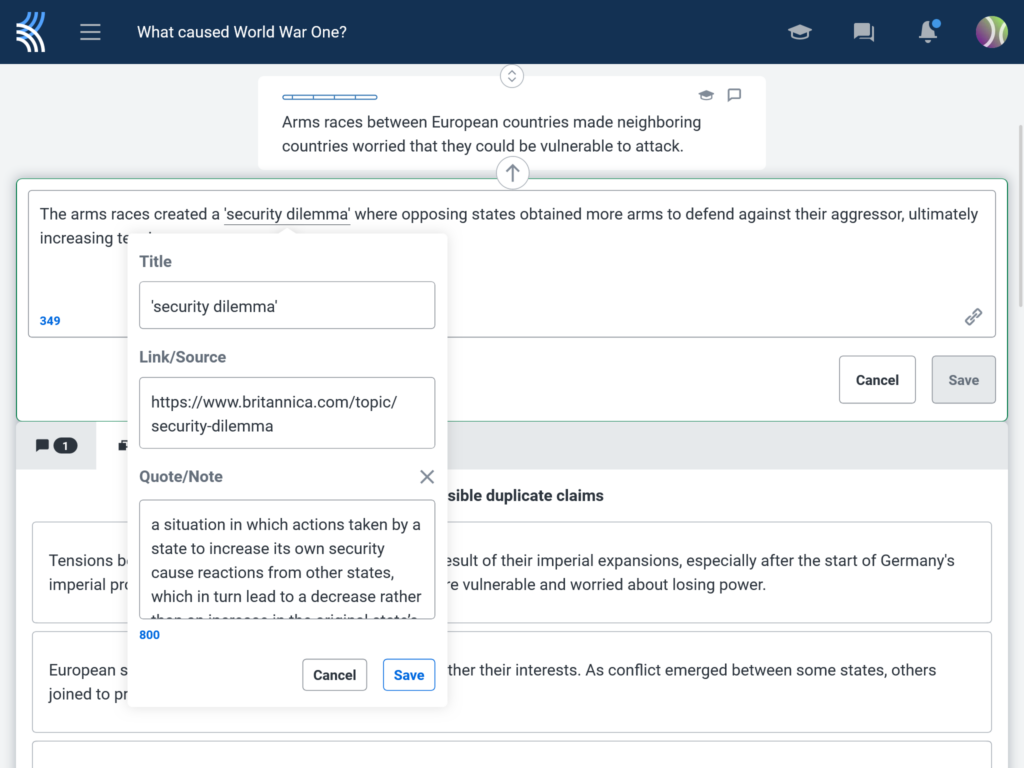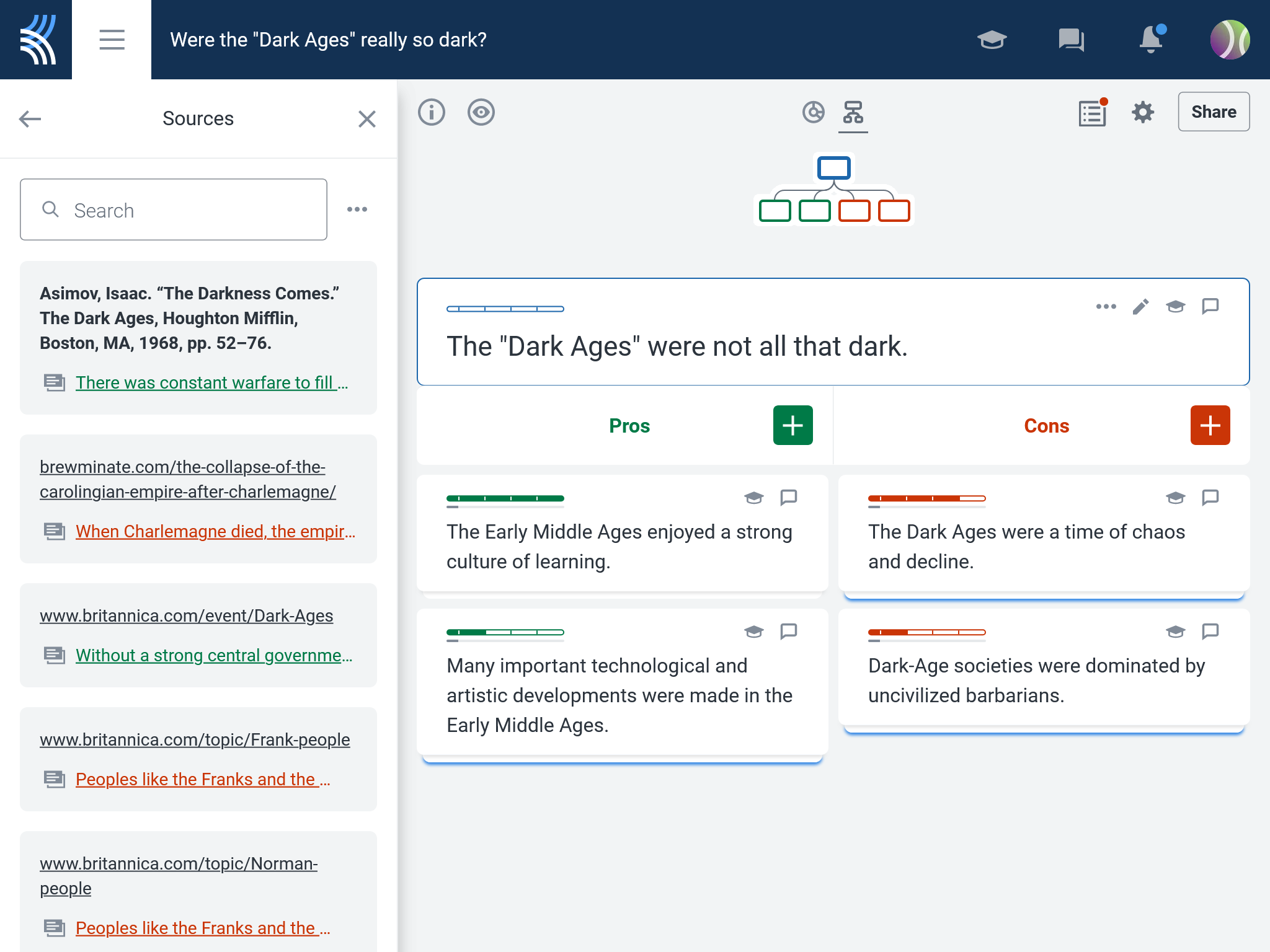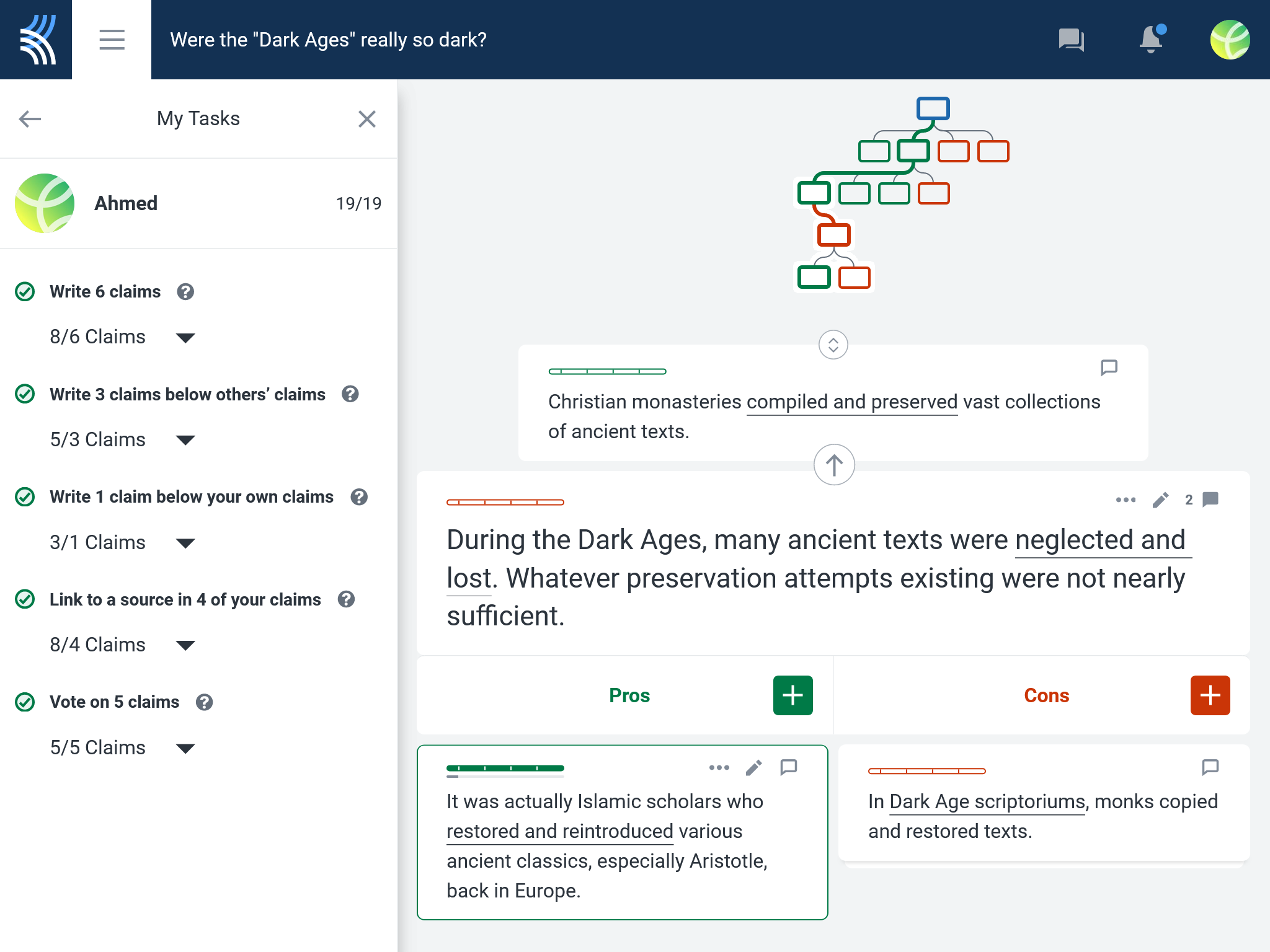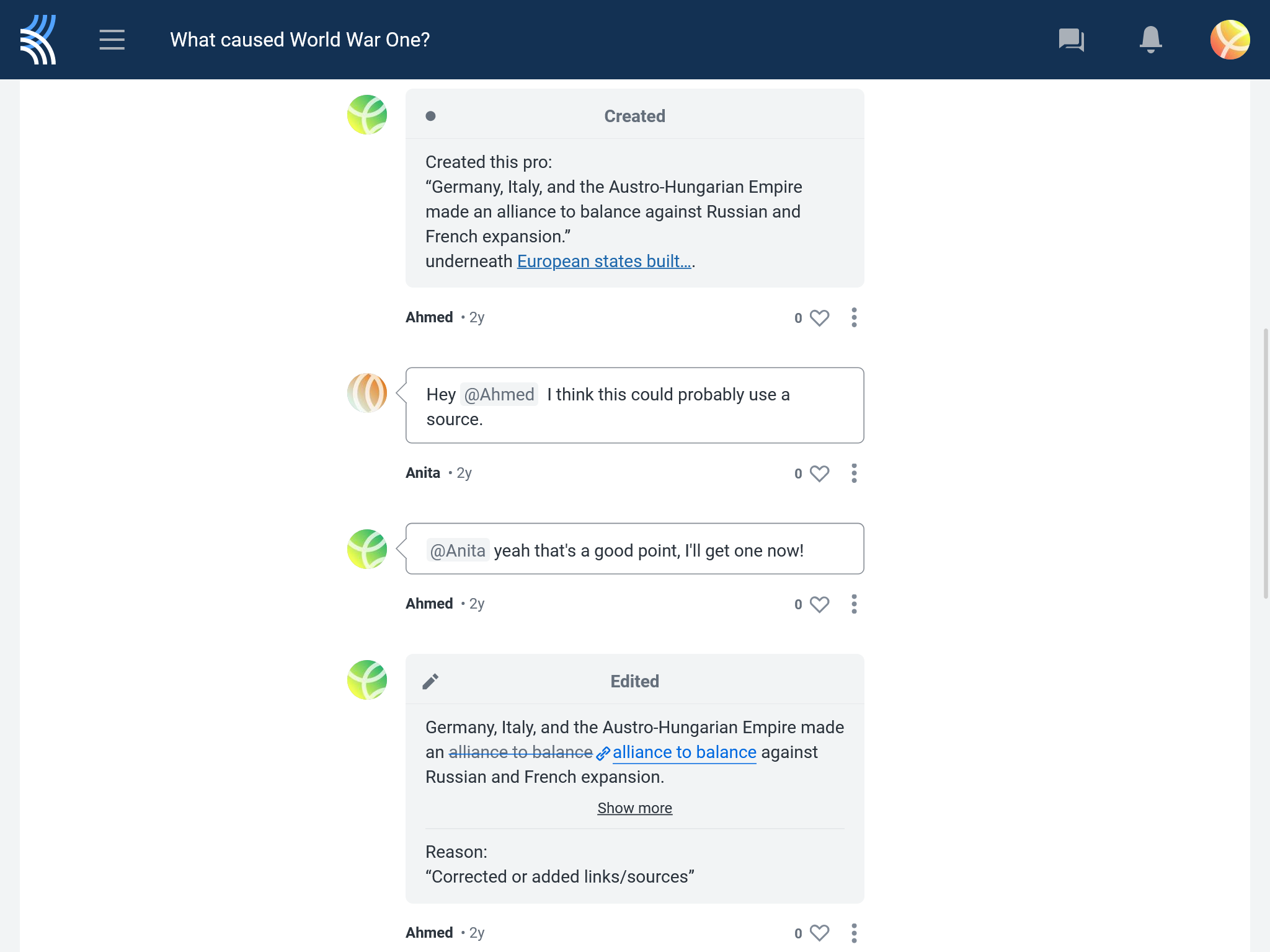Incorporating citations can be tricky, and formatting them to their exact specifications takes time. But knowing how to cite sources is about more than just adhering to a style guide; it’s also about recognizing the need to cite in order to maintain academic integrity and intellectual honesty in the process.
When it comes to teaching how to cite sources, teachers can guide students even from a young age by integrating certain skills and concepts into their classes. Let’s explore some approaches to this, including how you can do it on Kialo!
How to emphasize the importance of citing sources to students
1. Talk about why it is important to cite sources with students
Before students dive into the how, address the why. First, emphasize the ethical side: giving credit where credit is due! Even young students can appreciate the natural sense of fairness here in acknowledging how others’ contributions helped them with their work!
Show students that citing sources helps their work be more credible. Citations also allow readers to research further into a topic should they choose to, acting as a trail map to guide readers back to the source material with ease.
2. Tell students that citing sources avoids plagiarism
Of course, citing sources also prevents plagiarism. Helping students understand what constitutes plagiarism can help them avoid unintentional plagiarism. Plagiarism may arise from a lack of awareness or oversight, rather than a deliberate attempt to deceive.
Activities to teach students how to cite sources

Integrating activities for citing sources into your lessons on an ongoing basis can help demystify the process for students, which helps set them on the right path to using sources effectively to further their own work.
1. Create visual references to guide and remind students to cite sources
Anchor charts can provide a convenient reference for your students during class. They may include sentence frames to scaffold citing authors in writing, or the elements of your chosen citation style. They may remind students of the key differences between summarizing, paraphrasing, and quoting. Involve students in making such charts to give them a hand in their own learning.
You could also provide a framework for students to work on, such as a graphic organizer that specifically includes sources to complement the RACES writing strategy.
2. Have students practice paraphrasing information
While it’s true that some students may try to pass off someone else’s work as their own, others may misunderstand paraphrasing or have a haphazard approach to reference management when note-taking. This can lead them to accidentally omit correct citations from their work in the process.
It can also be difficult to recognize that fine line between our own ideas and words and those of others. That’s to say, refining the art of paraphrasing takes practice.
Prompt students to read a passage a number of times until they feel comfortable with the information. Then, ask them to cover it and rewrite it in their own words, adding an appropriate citation. Remind them to check the original to ensure they haven’t inadvertently kept the wording too close.
You can have students practice this by writing claims in Kialo Edu discussions. When students are adding information from a coursebook or external source to a discussion, encourage them to use their own words and add a citation using the link icon.
3. Have students engage with different source types and citation styles
Making use of a variety of source material not only gives students a feel for what credible sources look like, but also illustrates the common and distinctive features present when it comes to actually citing them. While the array (and detail!) of style guides, such as APA, Harvard, and MLA can seem overwhelming at first glance, they generally contain the same information, yet with just a few differences in formatting.
Have students compare different text and online sources to identify distinctions and reinforce what needs to be included for each in both in-text citations and reference lists.
Another source to consider citing is generative AI. Whatever your feelings on its use in education, there is a chance students will be using it, with style guides evolving to advise on apt citation practices for it. Having students explain and cite their use of Chat GPT in assignments may give teachers an opportunity to revisit the conversation around academic integrity, verifying the accuracy of information and the benefits of using your own words.
Activities to practice citing sources on Kialo Edu
1. Practice citing individual claims with the Kialo’s branching discussion structure
It can be challenging to identify which information in a text needs support. A Kialo discussion’s branching, tree structure helps students more easily focus on the content one claim at a time.

If students are using a Kialo Edu discussion as an essay alternative, they can use the pro-con structure to scrutinize the smaller parts of the topic to determine whether to add a citation.

Or, if you are giving students a Kialo Edu discussion you have built in advance for knowledge sharing, why not ask them to identify which claims need support and which may be classed as common knowledge? Then they can go into their course and supplementary materials to find the correct citations to add.
2. Practice citing sources with the Sources list to store citation references

Students can use the Sources list to view all their references in a discussion. This is an alphabetized list of all the sources linked in the claims in the discussion, with a link to see them in the claim in context. Here, teachers can also conveniently review the sources in a discussion along with optional citations.
Encourage students to get into the habit of keeping track of their sources by having them diligently use the note/quote space to add page or paragraph numbers and note any relevant information they may need to remember. Cultivating these habits not only helps them avoid unintentional plagiarism, but also the stress of the last-minute scramble to add citations!
3. Task students to add sources for their claims — literally!
You can use Tasks to set student objectives and as a checklist to guide student participation. Prompt students to add evidence to their claims by setting a specific task for including sources, and ask them to include a citation and quote where appropriate. Students can also practice in-text citations by adding them to the text of the claim itself.

And by specifying a relatively high number for the “Link to a source in your own claims” option, teachers can ensure citations are a measurable focus in a discussion.
4. Encourage peer feedback to check for citation accuracy
Hand over some of the feedback process to the students with a peer review of sources used. Ask students to check their classmates’ citations for accuracy and formatting, then comment with any corrections or questions. In doing so, they’ll reinforce their own understanding while also offering feedback.

Learning to cite sources appropriately is an ongoing process, and one which can be challenging for students. We’d love to hear about any techniques you use in your classes to help students get to grips with this topic. Please do share them with us at feedback@kialo-edu.com, or on any of our social media platforms.
Love using Kialo Edu with students? Here are even more ideas on how to incorporate Kialo discussions into your lessons!

